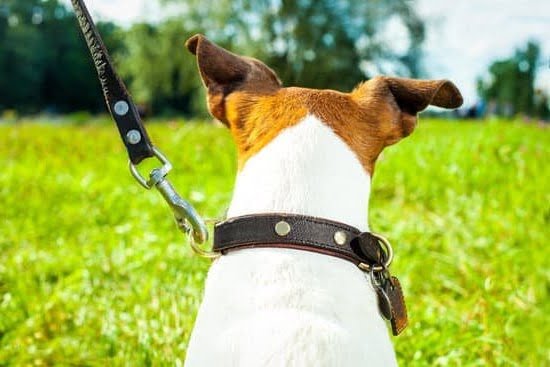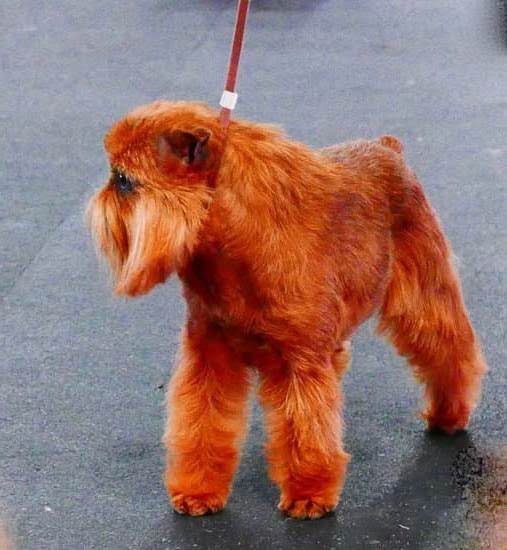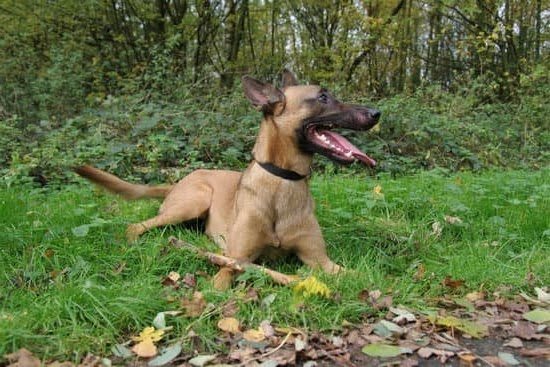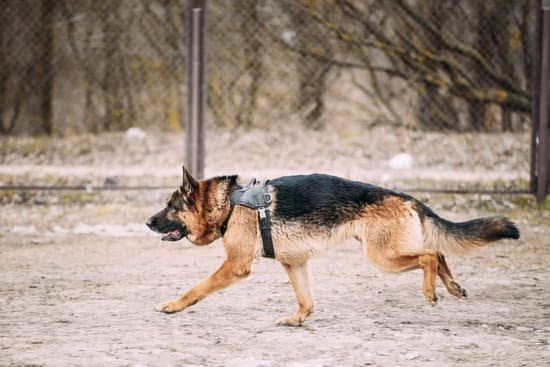Introduction
A dog groomer provides essential care and upkeep for dogs, such as hygiene and appearance maintenance. This can involve a range of activities such as shampooing, blow-drying, brushing and trimming fur, and expressing anal glands. Working in this role requires expertise in canine health and behavior so that the groomer can properly care for each individual animal. Becoming a dog groomer usually means undergoing some form of training to acquire the necessary skills and knowledge for the job.
Types of Training: To become a dog groomer, there are several different types of training that one can pursue. One type of program is provided by veterinary technician schools or dedicated dog grooming schools where one will learn information about canine anatomy, nutrition and behaviour as well as practical skills such as bath time management and grooming techniques. These schools may offer certifications upon successful completion of their courses. Alternatively some pet stores offer basic training courses on pet grooming which consist primarily of hands on instruction with an experienced groomer. Finally, some employer may provide in house ‘on-the-job’ training in order to teach employees their specific methods or practices.
Additional Requirements: While not necessarily required to become a professional groomer, many employers or clients may demand additional qualifications before they will hire someone or allow them on the premises with animals relatively unchecked. If an individual has opted for formal education then he/she may decide to pursue certifications through organizations such as the National Dog Groomers Association of America (NDGAA) or from the International Professional Groomers Incorporated (IPGI). Furthermore passion for animals is certainly beneficial since this line of work involves providing personal services which must be given from the heart rather than just from technical expertise alone
Types of Dog Groomers and Training Options
There are a variety of types of dog groomers, and the type of training that each groomer type needs to acquire depends on their specialization. For instance, general pet groomers primarily focus on basic hygiene maintenance and coloring of the fur, whereas specialty groomers may require specialized instruction in cutting and trimming fur or performing breed-specific styling techniques. Additionally, some groomers even provide pet bathing services as part of their services.
General groomer training typically includes courses in animal safety, breeds/coat types, shampooing/bathing procedures, brushing/combing techniques and nail clippings. Specialized schooling may also include instructions like using clipping machines, scissoring methods or completing specific treatments such as hand stripping or blending coats. Furthermore, some states may require additional certificated if the business uses certain grooming equipment and products (e.g., blades with heated combs). Certifications can be obtained through a variety of pet industry organizations and education programs.
In addition to more traditional academic-based learning environments such as colleges or distance learning webinars and classes, many future dog groomers also opt for on-the-job training opportunities provided by experienced professional groomers. Working on live animals under the guidance of an encouraging instructor offers students an invaluable opportunity to gain hands-on experience in growing their professional skillset while better understanding how to perform day-to-day tasks with efficiency & accuracy. Finally, no matter where an individual finds his/her training resources it’s always recommended that applicants obtain at least 1 to 2 years of experience within a grooming salon before attempting to go out on their own; allowing aspiring entrepreneurs a chance to familiarize themselves with the ins & outs of running a successful business from start to finish!
Certification and Licensing Requirements
In order to become a certified dog groomer, most states require individuals to complete a professional certification program. The length of the program and its curriculum vary depending on the school and type of program you choose. However, programs generally include basic dog care and handling courses as well as safety regulations, breed information, grooming techniques, nutrition, and store management. Most hands-on workshops include providing baths, trimming fur, nail clipping and styling for a variety of coat types.
In addition to taking classes or participating in an apprenticeship program, aspiring groomers must also get their state licenses which typically involves passing an examination specific to local health and safety regulations. Furthermore, it is necessary for any professional groomers operating their own business to obtain the necessary permits for their shop according to local laws. Finally pet groomers have the option of getting accredited by either the National Dog Groomers Association of America (NDGAA) or Professional Pet Groomers & Stylists Alliance (PPGSA). With either organization you are able to take additional examinations after completing all other licensing requirements in order maintain your credentials and stay up-to-date with new safety standards and techniques in dog grooming technology.
Skills Needed to Perform Safe and Effective Grooming
When it comes to dog grooming, it is important that groomers have the necessary skills in order to provide safe and effective services to their customers. Dog groomers must be skilled in recognizing common health problems and ailments of animals so they can judge what needs to be done when carrying out a grooming routine. They must understand breeds, breed standards, coat types, and how to properly trim a dog’s fur. Additionally, they must know which type of products works best on particular coats, as well as how to best manage difficult dogs or those with unique concerns.
In addition to these essential skills, dog groomers should also stay up-to-date with relevant information and developments related to animal care by attending workshops and seminars. Knowing how to properly deal with different kinds of tools such as clippers and scissors is extremely important for a pet stylist. It is also vital for them to have the physical strength needed for heavier breeds that require additional work. In order for them to be successful, they should also have excellent communication and customer service skills so that they can effectively communicate with clients about topics ranging from specific instructions to scheduling appointments. Finally, gaining hands-on experience can prove useful in helping acquire new skills in this profession. To become proficient in grooming dogs of all sizes requires time and practice
Considerations When Choosing a Dog Grooming Program
When considering a dog grooming program, it is important to look for one that will train you on all the necessary aspects of grooming. A good training program should focus on topics such as identifying skin and coat problems in dogs, administering basic care and first aid, bathing and drying, brushing and deshedding hair and skin, clipper and scissor techniques, breed-specific styling, safety training for both the groomer and the animal being groomed, record keeping for clients and their pets, client education about how to properly care for their pet’s coat at home between professional grooming sessions. It’s also critical to choose a program that provides you with hands-on practice with a wide variety of dog breeds so that you can get experience with different types of coats. Additionally, it may be beneficial to find a school or program that offers placement assistance so that you can gain work experience as part of your training before seeking employment as an independent groomer. Lastly, many states require licensing for dog groomers; make sure your chosen program offers preparation for any required state licensing exams.
Learning About Different Dog Breeds and Grooming Techniques
In order to become a professional dog groomer, it is important to understand the various differences between different breeds of dogs. Not all dog breeds require the same grooming techniques and styles; each breed has its own unique set of grooming needs. For example, long-haired breeds such as Shih Tzus will require trimming around their eyes, ears and feet, whereas shorter-haired breeds may only need regular brushing or bathing.
It is also important for future groomers to familiarize themselves with the various tools used in pet grooming. Depending on the breed of dog that is being groomed, there may be special tools or clippers suitable for their fur type. In addition, there are numerous shampoos and conditioners specifically designed for certain types of coats—it is essential to be familiar with what products best suit different coat types and lengths.
Finally, it is crucial to understand safety protocols when grooming pets – this includes learning how to properly work with animals that may have been traumatized in the past, demonstrating awareness by not scaring them and respecting their boundaries. Additionally, knowledge in canine first aid could prove beneficial in emergency situations. Understanding these topics is essential if anyone wishes to become a certified professional dog groomer.
Tools and Supplies Needed to Become a Successful Groomer
To become a successful dog groomer you need more than just the basic knowledge of grooming techniques. You will also need to acquire the right supplies, tools, and resources while training in order to maximize your success. For any dog groomer it is important to have necessary items such as shampoo and conditioners, combs, brushes, hair clippers and trimmers, nail trimmers and grinders, electric shears and thinning scissors, furminators and dematting tools. Other items that can help a groomer like colognes specifically formulated for pets are often needed too.
In addition to the various grooming tools mentioned above that must be purchased or acquired in some fashion it is recommended for aspiring dog groomers to invest in professional quality equipment such as dryers or kennel cages. This equipment can quickly pay for itself due to increased efficiency from reduced drying times allowing clients to leave with their pup faster. Additionally having higher quality equipment makes sure clients’ trust in one’s technical ability but also adds a level of professionalism when first impressions matter most. Investing in other materials like aprons or gloves made from durable material along with towels that absorb well can go a long way too.
Finally qualified groomers usually get certified which shows not only competence but also the required skill set of knowledge necessary for maintaining healthy animals through proper care regimens. Professional certifications are an important element of being a successful dog groomer especially when insurance companies require proof of credentials before they extend coverage policies.
Setting Up a Dog Grooming Business
Starting a dog grooming business can be an incredibly rewarding experience. Not only do you get to work with animals and make a difference in their lives, but it can also be very lucrative. To begin, you must consider the training and certifications you will need.
Most states require that dog groomers who own their own businesses have some form of formal schooling or certification to practice. Obtaining a certificate or degree from an accredited program is necessary to ensure your customers receive the highest level of care and wellness advice for their furry friends as possible. To qualify as a professional canine groomer, courses may include bathing, nail clipping, de-matting, clipper usage and more. It’s also important to know how to handle breed-specific cutting styles if you plan on offering them and first aid if any pet emergencies arise during a grooming session. In addition, brushing up on your knowledge of canine anatomy, behavior and parasites will help reduce mistakes in the grooming process. Keep in mind that additional training may be required over time such as continuing education classes or certifications like master groomer status through animal species specific organizations like the National Dog Groomers Association of America (NDGAA).
When establishing your business premises it is essential to understand local regulations for handling dogs – including vaccinations requirements for each groomee – plus zoning laws regarding where animals can safely live and play outdoors and indoors. Knowing what supplies are needed is important too; from basic grooming tools like scissors, combs primpers;to higher end equipment such as table dryers and mobile kennels for transporting groomees back home again afterwards. It’s also worth researching the market around you so that you can keep competitive when pricing services and products which may not yet be offered by local competitors. Finally, one must dedicate themselves to stay informed about developments in the industry so they can create innovative ideas which will draw repeat customers while keeping them safe at all times
Keeping Up with Current Trends in Dog Grooming
To keep up with current trends in dog grooming, professionals must attend seminars and conferences that are specific to the industry on a regular basis. Seminars may include topics such as new techniques, products, or diseases associated with dog grooming. It may also include discussions on how to work with certain types of dogs, such as those who are fearful or aggressive. Additionally, conferences may feature speakers from the pet care world and provide an opportunity for professionals to network amongst one another. Staying abreast of new developments in the field is key for any successful dog groomer hopeful to stay ahead of the competition.
Conclusion
Being a dog groomer is a rewarding job that requires unique skills and knowledge. The benefits of being a certified professional in this field are numerous, but so are the challenges.
The primary benefit of being a dog groomer is providing quality care to animals. Certified professionals must know the anatomy and general health needs of the breeds they work with, as well as understand their behavior and temperament differences. Dog groomers bring out the best in their clients’ pets by providing routine bathing, trimming, and styling services that make them look, feel, and smell great!
In addition to feeling fulfilled by providing indisputable love, care, and attention for dogs, groomers can also enjoy financial rewards. From established clientele to charging premium prices for individualized services like flea treatment or dye-jobs—the sky really is the limit when it comes to earning potential in the industry.
However, there are some major challenges associated with being a dog groomer. You’ll need to remain physically fit – always be ready to lift heavy animals, move awkwardly shaped breed-specific equipment around your salon or mobile service van, and handle wet fur all day long. Furthermore, nerves of steel will come in handy when dealing with anxious animals or aggressive canine owners! A good head for business management is also helpful for managing your files properly and taking care of accounts receivable/payables in order to generate sufficient profits to sustain your venture(s).
Despite these adversities—dedicated animal lovers who have an eye for detail can find much satisfaction working as a dog groomer if they stay focused on corporate goals while ensuring client care principles remain paramount at all times.

Welcome to the blog! I am a professional dog trainer and have been working with dogs for many years. In this blog, I will be discussing various topics related to dog training, including tips, tricks, and advice. I hope you find this information helpful and informative. Thanks for reading!





